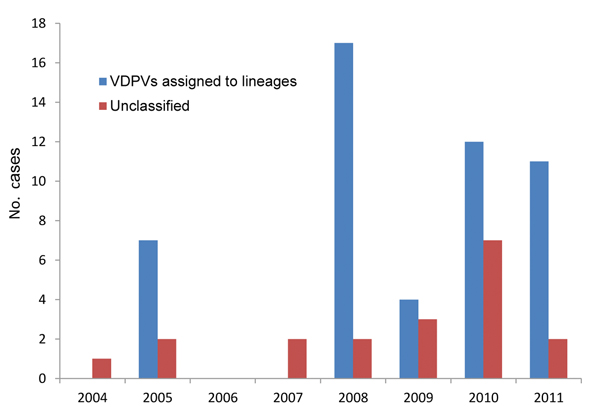Volume 19, Number 10—October 2013
Research
Emergence of Vaccine-derived Polioviruses, Democratic Republic of Congo, 2004–2011
Figure 2

Figure 2. . Yearly incidence of vaccine-derived polivirus type 2, Democratic Republic of Congo, 2004–2011. The total number of cases associated with vaccine-derived polivirus type 2 is graphed for each year according to date of onset of paralysis. Viruses that are not assigned to a lineage are categorized as unclassified. VDVPs, vaccine-derived PVs.
Page created: February 03, 2014
Page updated: February 03, 2014
Page reviewed: February 03, 2014
The conclusions, findings, and opinions expressed by authors contributing to this journal do not necessarily reflect the official position of the U.S. Department of Health and Human Services, the Public Health Service, the Centers for Disease Control and Prevention, or the authors' affiliated institutions. Use of trade names is for identification only and does not imply endorsement by any of the groups named above.